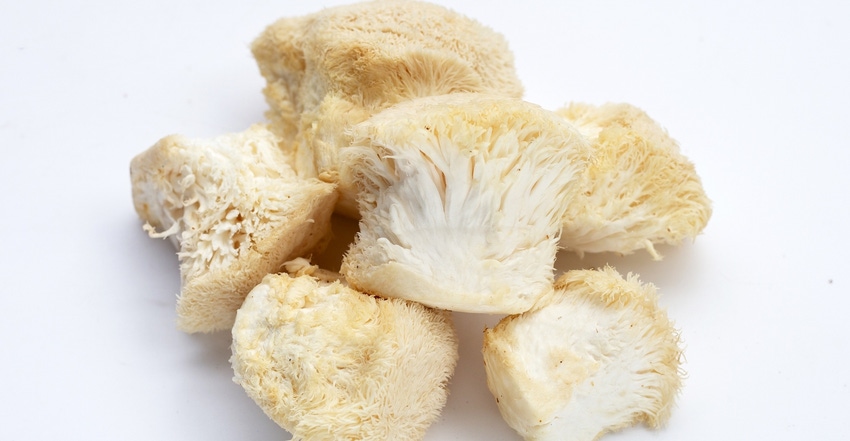Nammex petition requests FDA clarify mushroom labeling
Mushroom product manufacturer Nammex (North American Resihi Ltd) has filed a citizen petition with FDA to clarify the labeling of fungal ingredients to help reduce consumer confusion.

Many species of fungi have fruiting bodies referred to as mushrooms. However, most of the organism consists of mycelium, the threadlike structures underground or woven through the material that the fungi are digesting. The mushrooms arise from these structures.
Health products made from fungi can consist of mushrooms (powders or extracts), mycelium, or both.
In the case of mycelium products, the capsule or final product may include grain substrate on which the fungal ingredient is grown. It’s a widespread practice to call all those products “mushrooms” on the label of a bottle.
The part of the organism matters
In a press release announcing the filing of the petition, Nammex says it has been advocating for many years for more transparency in the labeling of these products. The company advocates that fungal ingredient labeling practice should follow the lead of botanicals, in which labeling of the plant parts is required.
While an FDA regulation (21 C.F.R. § 101.4(h)) requires listing part of the plant from which a dietary ingredient originates, “the regulation is silent with respect to the requirement to list the ‘part’ e.g., ‘mushroom,’ ‘mycelium,’ [or] ‘spore’ from which a fungal ingredient is derived,” Nammex wrote to FDA.
“Nammex believes this lack of clarity in the regulation has created confusion in the marketplace and opened the door for the deceptive marketing of dietary supplements containing ingredients from fungi,” the citizen petition added. “Thus, FDA should amend the cited dietary supplement labeling regulations to expressly mandate that the part of the fungus from which a fungal ingredient is derived must be listed on dietary supplement labels, along with the common or usual name of the fungus from which the fungal part is derived, as is expressly required for herbs and botanicals.”
Plants used for health purposes can express the bioactives of interest in different ways. Some plants are harvested for their roots, while in others only the aerial parts are used. In other plants, only the fruits are harvested.
In fungi, Nammex maintains, the bioactives are concentrated in the mushrooms, which is why this specific labeling is needed—to ensure consumers are getting what they paid for.
“Given the explosive growth the mushroom category is undergoing and entry of new companies marketing products with fungal ingredients that may not be aware of the regulatory requirements, it made sense to undertake this action now,” Nammex founder Jeff Chilton said in the press release. “We hope to raise awareness of the mislabeling problem that exists today in the U.S. and obtain FDA regulatory guidance on the labeling of mushrooms and other fungal ingredients to ensure truth-in-labeling.”
Chilton added, “When consumers buy a product labeled as ‘mushroom,’ they should feel confident that they are getting a genuine mushroom product.”
Amount of bioactives hard to assess from label information
The so-called “mycelium on grain” (MOG) products can include a significant amount of carbohydrates from the grain substrate, which has a material effect on the characteristics of the finished article.
According to an article that Nammex Chief Strategy Officer Bill Chioffi wrote for Natural Products Insider, “Due to the high amount of grain starch, MOG has significantly lower active compounds compared to mushrooms. Therefore, MOG poses formulation challenges in delivering enough actives to provide similar health benefits as those contained in mushrooms.”
As an example, a multi-fungi formulation chosen at random for sale on Amazon is labeled as “mushrooms” on the front of the package. The ingredients panel identifies “mycelium” or “mycelium and fruiting body,” depending on the fungal species. But there is no information that would help a consumer compare the concentration of bioactives in the product to one sourced exclusively from fruiting bodies.
In the petition, Nammex also requested FDA issue industry guidance regarding the proper labeling of fungal ingredients, including a glossary of mycological terms.
“This would assist manufacturers, distributors and marketers of foods and dietary supplements containing fungal ingredients in complying with FDA regulatory requirements to help ensure products are not misbranded and/or adulterated under” the Federal Food, Drug & Cosmetic Act, Nammex wrote in the petition.
Can the petition make a difference?
FDA must respond to a citizen petition within 180 days, and Nammex says it plans to keep the industry informed on the progress of its request. However, the agency is permitted to delay a substantive response to a petition, if for example, it needs additional information or has other priorities.
Earlier in his career, industry attorney Marc Ullman encountered an instance in which FDA finally responded to a more than 20-year-old petition.
“Unfortunately, it seems FDA views [citizen] petitions as an annoyance rather than something that deserves serious attention, regardless of the subject,” Ullman, who is of counsel to Rivkin Radler LLP, said in an interview. “I would expect this to be no different.”
About the Author(s)
You May Also Like






.png?width=800&auto=webp&quality=80&disable=upscale)